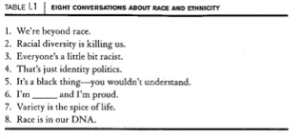Although women are increasingly becoming involved in sports, there is still a discrepancy between the way society treats male and female athletes. There is a long history of privileging men in athletic competitions. For example, although the Olympic games have been around since 776 B.C., women were not permitted to compete until the 1900 games in Paris (Frantz, 2016). At that time, women made up only 2% of total athletes. This ratio has increased over time with women comprising of 44% of the total athletes competing at the 2012 London games. However, even this number can be improved. And that’s just the Olympics.
The gender divide in sports begins at an early age and widens over time. After the age of six, there is a lasting gender gap in athletics, with more males involved in sports than women (Tinsley, 2015). There are many factors that contribute to this divide. Boys are often more encouraged to play sports than girls. Boys begin to receive sports related toys at age two (Women’s Sports Foundation, 2011), and generally enter athletics two years earlier than girls. This causes many girls involved in organized sports to feel inferior to boys who have already developed the practice skills required to perform well in sports (Women’s Sports Foundation, 2011).
Although in recent years young girls have become increasingly involved in athletics, statistics show that “teenage girls drop out of sports at a rate that is six times higher than that of boys” (Hardin and Greer, 2009). During their teenage years, girls become more concerned with their body images. Since sports cause people to look sweaty and red-faced, many girls decide to stop engaging in athletics (Tinsley, 2015). As boys mature, they are respected and envied if they are particularly skilled at sports.
While girls are not necessarily discouraged from participating in sports, they do not receive the same incentives encouraging them to continue athletic involvement. While this pattern begins in childhood, it persists at all life stages for female athletes. Even at professional levels, female athletes competing on national sports teams in the United States receive less recognition compared to their male counterparts. The Women’s National Basketball Association (WNBA) contains 12 teams compared to the 30 in the National Basketball Association (NBA). In 2015, the United States women’s soccer team won the World Cup, while the men’s team did not win. Yet, as of 2016, female soccer players still receive smaller salaries for winning all of their games ($99,000) than male soccer players who lose all of their games ($100,000) (Yourish, Ward and Almukhtar, 2016). Without the same resources and encouragement, girls are less likely to pursue athletic endeavors.

Gender inequality extends to the broadcasting of sports. Women’s events receive less coverage than those of their male counterparts. Gymnastics and figure skating, which portray women as graceful, delicate, beautiful creatures (Harding and Greer, 2009) receive the most broadcasting.
Women who appear strong and powerful in athletics often receive less media coverage because society continues to place large importance on a woman’s appearance. Leading up to the 2000 Olympic games in Sydney, the very muscular, track athlete Marion Jones confidently expressed her chances of winning multiple gold medals. Yet, Jones received little media coverage compared to her teammate, Amy Acuff, a part-time model whose chances at winning a medal were slim. When interviewed, reporters rarely asked about Acuff’s athletic endeavors. They instead focused mostly on questions relating to her upcoming Sports Illustrated swimsuit issue (Bernstein, 2002). Not only did Acuff receive more media coverage than Jones because of her traditionally “feminine” appearance, but also the attention Acuff received did not focus on her athletic ability at all.
Society is happy to allow women to prance around in leotards and sparkles, but it does not want to see women dripping with sweat or developing large muscles. Such displays compromise a person’s ability to appropriately “do” gender as public audiences would expect. Candace West and Don Zimmerman (1987) explain, “doing gender consists of managing such occasions so that, whatever the particulars, the outcome is seen and seeable in context as gender appropriate or, as the case may be, gender inappropriate, that is, accountable.” If a woman does not present herself in a way that is “physically appealing,” she is not playing into her gender role and is more likely to receive criticism. Society has taught females that participation in sports goes against feminine performance norms, and thus, women receive little praise for their involvement in athletics.
If a female decides to participate in athletics, especially in male-dominated sports, she is often subject to harsh criticism. After tennis powerhouse Serena Williams, won her 21st Grand Slam title, reporters were quick to judge her for her deviant portrayal of femininity. Rather than asking her about her athletic achievement, reporters questioned why she was not sitting, smiling and acting as if she had not just completed an exhausting athletic feat.
When girls decide to opt out of sports, they miss out on many of the benefits that physical exercise offer. Girls who participate in athletics tend to lead healthier lifestyles and perform better in school compared to girls who do not regularly participate in athletics. They are also less likely to consume alcohol, use drugs, or become pregnant as a teenager. Female athletes report higher levels of contentment with their lives than girls who do not participate in physical activities.
Girls should not lose out on all the benefits that physical exercise provides because of concern with their appearance—something they would not be conscientious about if society did not place such a large importance on it. Rather than imposing standards of beauty that discourage girls from participating in athletics, women and society would be better off focusing on the elimination of the inequality gaps between the genders in sports.



